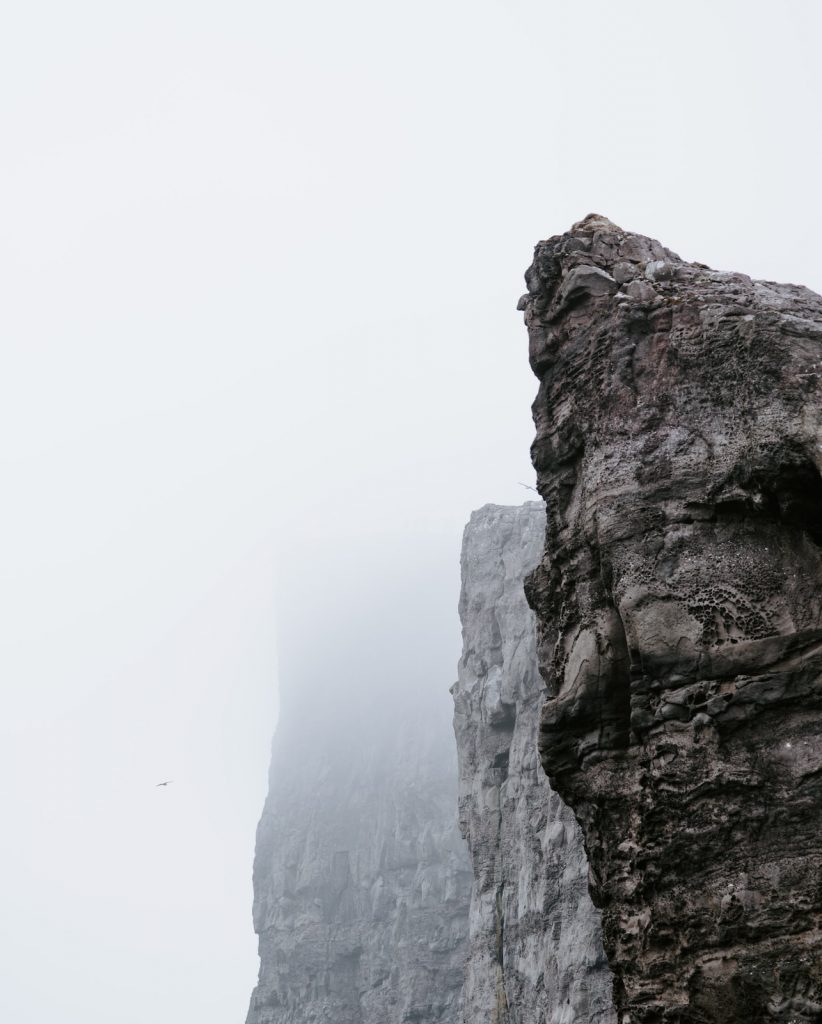Given the current state of our world, the theme of grounding in groundlessness seems both apt and urgent. All of us have found ourselves at some point in our lives or in our practice when we’ve had to face the unknown. It’s that point in which we realize that the ground we’ve trod on so far, though tried, is no longer true, no longer serving us, no longer the way we want to go. And so we stand at the edge of a cliff, toes curled over the rim, terrified to step forward but unwilling to turn back—stuck, it seems, between wanting to be safe and wanting to be free. We stand, heart in our throat, every fiber of our being simultaneously reaching and bracing. Because, although we know that what lies behind us will no longer give us the peace or the satisfaction that we’re looking for, we have no idea what lies ahead. We don’t know what’s at the bottom of the cliff. We don’t know if we actually have the courage to step forward, and if we do, whether we’ll survive the fall.
In zazen, this is the moment in which the self is beginning to slip away. A moment, short or long, where we’re somehow not there. But realizing the danger it’s in, the self freaks out and quickly moves to reinstate itself. Your body jerks, your mind sputters, and before you know it, you’re fully there and fully you, and swearing you’ll never let yourself get that close to the edge again.
In everyday life, this is the moment in which you realize your job, your relationship, your way of parenting, or your view of yourself or the world is no longer working. All the conflict, all the pleasure and pain, all the anger and justification, haven’t gotten you what you wanted—or if they did, what you wanted didn’t last, and now you’re tired of this neverending game. You’re tired of war. You’re tired of longing. You’re tired of hustling and of not feeling like you belong, no matter how hard you work. You vow to change, but you don’t know how. So here you are, at the edge of that cliff, desperate for something to show you that it’s okay to jump, it’s okay to take a chance, because everything you’ve relied on up to this point is no longer cutting it.
Let’s face it, this moment can be incredibly lonely. Maybe we look around and see that our friends are perfectly happy going about their lives. At least, they seem to be. Maybe our family wonders why we’re always so restless, always dissatisfied, always looking. We may start to wonder if there’s something wrong with us. Why can’t we just be happy? Our lives are pretty decent, all things considered. Why can’t we just be satisfied?
This moment is crucial. If we give in to doubt, we’ll talk ourselves away from the cliff’s edge with the reasoning that indeed, our lives are pretty good, so why make waves when there are none? Surely we’ve made more of this suffering bit, and if we just buckle down, we should be able to make our lives work as they are. From the perspective of the self, whose job is to endure at all costs, samsara isn’t so bad. Then again, there’s few things the self can’t talk itself into given enough incentive.
On the other hand, if we choose faith, then something else entirely can happen. Maybe we remember someone’s words, or we read a line in a book, or we decide once and for all that we no longer want to live the way we have been. Then, just as we’re about to take that step into space, something makes us turn and look down the cliff’s rim. That’s when we realize with a start that we’re not alone and never were. For stretching as far as the eye can see is a long line of bodhisattvas, ready to take that step with us. We turn left and the picture is the same: being after being urging us on, encouraging us to step into the unknown.
And so we do. Simply and without thought. We step and immediately find ourselves, neither dead at the bottom of the cliff, nor broken. Instead, we are utterly whole and standing strong on solid ground—not solid in the way that we think, but sound. Tried, by thousands of women and men over the years, and finally… finally true.
Thank you for subscribing to Tricycle! As a nonprofit, we depend on readers like you to keep Buddhist teachings and practices widely available.
